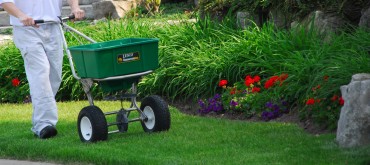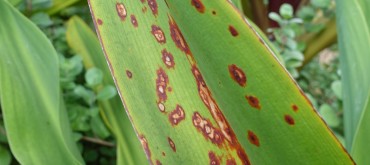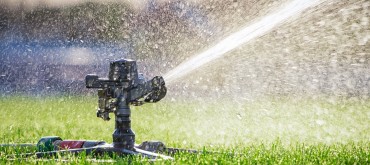Problem
Really hot and dry conditions allow crabgrass seeds the opportunity to germinate through exposure to increased sunlight. This provides the perfect growing conditions, with little competition from the existing lawn. One thing to keep in mind is that crabgrass has the ability to produce thousands of seeds that can remain in your lawn for years to come, waiting again for the perfect conditions to start up the following spring. Crabgrass is an annual and arrival of the fall weather triggers this grass to die before winter. This is to our advantage as it allows us to manage it the following season, starting in the fall.
Life Cycle
Crabgrass is an annual weed that is commonly found in July, thriving in hot and dry weather conditions.
Solution
As mentioned above, when the temperatures start to drop in the fall, you will notice the existing crabgrass plants starting to turn purple just before they die off. This dying off period is when we need to put in some effort into lawn repair work, without having to actually pull any of the crabgrass out. If we do not repair any bare patches left by the crabgrass in the fall, when next season comes around there will be a high likelihood that the crabgrass will return. The new seed has the ability to germinate very quickly in direct sunlight, heat and dry conditions, but only if the sun can reach the soil surface and the bare spots remain.
The patches can easily be repaired through proper overseeding along with some compost. What is most important after overseeding is to ensure you keep the areas seeded moist for at least 3-4 weeks to allow germination of the new seed.
Lastly, following proper lawn care practices will always be the best way to minimize the growth of crabgrass and many other weeds. A strong root system will produce a thick and healthy lawn that in turn will be able to outcompete weeds attempting to germinate. Always maintaining your lawn at a mowing height of more than 2.5”-3” will give your soil the shade it will need to prevent crabgrass seeds or any weeds from germinating. Watering deeply but less frequently will also ensure that the grass roots get moisture and the weed seeds don’t, at least not enough to germinate. Regular fertilization will also provide your lawn with the nutrients it needs to stay healthy.
If you do get the occasional weed on your lawn, the best solution would be pulling out the weed with its roots or by applying a selective weed control product that is available at your local retail outlet. If you feel like you’ve tried everything and need professional help, we offer a 6 visit program with weed control to help your lawn withstand weed invasion. If you have any questions about weeds on your lawn, don’t hesitate to give us a call and a lawn care specialist will be happy help.





